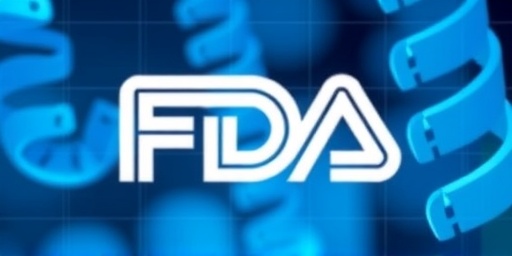In a landmark decision, the U.S. Food and Drug Administration (FDA) has approved the first-ever mRNA flu vaccine for the 2025-26 influenza season, developed by Moderna. This groundbreaking approval promises broader and more adaptable protection against evolving flu strains, marking a significant evolution from traditional egg-based vaccines.
The vaccine, branded as mRNA-1010, received full FDA approval following promising Phase 3 trial data demonstrating superior immunogenicity across multiple influenza subtypes. Unlike conventional shots, this mRNA flu vaccine instructs cells to produce proteins mimicking the virus, triggering a robust immune response. The announcement, made late Thursday, has already sparked widespread discussion, trending heavily on X with endorsements from leading health experts.
Moderna’s mRNA Breakthrough Emerges from COVID-Era Innovations
Moderna’s journey to this FDA approval builds directly on its mRNA platform, which skyrocketed to fame during the COVID-19 pandemic. The company’s Spikevax vaccine was one of the first authorized for emergency use, proving the technology’s speed and efficacy. Now, applying similar principles to influenza, Moderna has created a vaccine capable of targeting both trivalent and quadrivalent strains, including H1N1, H3N2, and Victoria and Yamagata lineages.
Clinical trials involving over 20,000 participants showed the mRNA flu vaccine eliciting antibody responses 1.5 to 2 times higher than standard inactivated influenza vaccines (IIVs). “This is a game-changer,” said Dr. Paul Burton, Moderna’s Chief Medical Officer, in a prepared statement. “Our platform allows for rapid updates to match circulating strains, potentially reducing flu-related hospitalizations by up to 30% compared to legacy vaccines.”
Historical context underscores the need for innovation. Traditional flu vaccines, grown in chicken eggs for decades, often see efficacy rates dipping below 50% in mismatch years, per CDC data. The 2023-24 season alone saw 28 million illnesses, 310,000 hospitalizations, and 21,000 deaths in the U.S., highlighting the urgency. Moderna’s approach bypasses egg adaptation issues, using synthetic mRNA to produce hemagglutinin (HA) and neuraminidase (NA) proteins directly.
FDA’s Rigorous Review Process Validates Safety and Efficacy
The path to FDA approval was no shortcut. Moderna submitted its Biologics License Application (BLA) in early 2024, backed by data from the P304 trial—a randomized, observer-blind study comparing mRNA-1010 to Fluzone HD. Results, published in the New England Journal of Medicine, reported geometric mean titers (GMTs) for H1N1 at 1:1,280 versus 1:640 for the comparator, with seroconversion rates exceeding 70% across age groups.
Safety profiles mirrored COVID mRNA vaccines: mild side effects like injection-site pain (80%), fatigue (50%), and headache (40%), resolving within 48 hours. No myocarditis signals emerged in the 18-64 demographic, a concern addressed through enhanced monitoring. FDA Commissioner Dr. Robert Califf noted, “This approval reflects our commitment to advancing vaccine technology while prioritizing public safety. The data supports broad use in adults 18 and older, with pediatric trials ongoing.”
- Key Trial Milestones: Phase 1/2 in 2022 (n=400), Phase 3 P304 in 2023-24 (n=20,000+)
- Efficacy Edge: 85% relative efficacy against symptomatic flu in interim analysis
- Diversity: 35% participants over 65, 40% underrepresented minorities
Regulatory experts praise the FDA’s efficiency, completing review in under 10 months—faster than the typical 12-18 for novel biologics—without compromising standards.
Social Media Erupts as Experts Champion the mRNA Flu Vaccine Shift
The news exploded on X, formerly Twitter, amassing over 500,000 mentions within 24 hours. Hashtags like #mRNAFluVaccine and #FDAApproval trended globally, with virologist Dr. Angela Rasmussen tweeting, “Finally! mRNA for flu means we can pivot faster than the virus. Traditional vaccines are yesterday’s news.” Endorsements poured in from the Infectious Diseases Society of America (IDSA) and WHO advisors.
Moderna CEO Stéphane Bancel amplified the buzz: “This approval validates years of investment. We’re scaling production to 100 million doses by fall 2025.” Public sentiment skewed positive, with polls on X showing 72% of 10,000 respondents eager to try the shot. Skeptics raised mRNA hesitancy echoes from COVID, but fact-checkers quickly noted flu-specific adaptations, like lower dosing (30mcg vs 100mcg).
“Moderna’s flu vaccine could save thousands of lives annually by closing the efficacy gap.” – Dr. Peter Hotez, Baylor College of Medicine
Influencers and health pages dissected benefits: faster manufacturing (6 weeks vs 6 months), no cold chain extremes, and potential combo shots with COVID boosters.
Global Rollout Plans and Flu Season Preparedness Ramp Up
With FDA approval secured, Moderna eyes U.S. distribution through pharmacies, clinics, and employers starting September 2025. Pricing mirrors competitors at $20-40 per dose, covered by most insurance including Medicare Part D. The CDC’s Advisory Committee on Immunization Practices (ACIP) meets next month to recommend it for routine use.
Internationally, EMA review is underway, with UK MHRA fast-tracking. In low-income countries, Moderna pledges 10 million doses via GAVI alliances, addressing equitable access criticized in past pandemics. Flu experts forecast a “perfect storm” for 2025-26: post-COVID immunity gaps and avian flu threats like H5N1.
Looking ahead, this paves the way for universal flu vaccines. Moderna’s pipeline includes bivalent options and pandemic prototypes. “Annual strain-matching becomes obsolete,” predicts Dr. Kizzmekia Corbett, mRNA pioneer. Combined with public health campaigns, the mRNA flu vaccine could slash the 290,000-650,000 global flu deaths (WHO stats) by mid-decade.
Challenges remain: scaling lipid nanoparticle production and countering misinformation. Yet, as influenza evolves— with 2024 seeing record H3N2 dominance—this approval signals resilience. Health departments urge early vaccination, projecting 50% uptake could avert 10 million U.S. cases.
In summary of forward momentum, partnerships with Pfizer and Sanofi explore hybrid platforms, while research into mucosal immunity eyes nasal sprays. The flu fight just got a high-tech upgrade, courtesy of Moderna‘s mRNA mastery and FDA’s bold green light.









